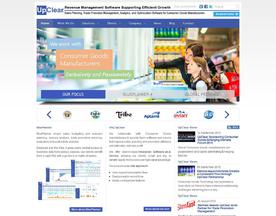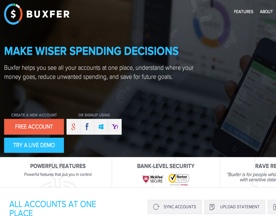How to secure funding via startup business loans with no revenue? Explore grants, pitch to angel investors, join accelerators, and consider crowdfunding to secure startup business loans without revenue.
Startup businesses often face the challenge of obtaining financing from traditional lenders due to their lack of revenue and credit history. However, there are options available for startups to secure funding without revenue. Startup business loans with no revenue are designed to help entrepreneurs get their businesses off the ground and cover initial expenses.

Understanding Startup Business Loans with No Revenue is crucial for entrepreneurs looking to secure financing for their business. These loans are specifically designed for startups that have no revenue or limited revenue. They are typically offered by alternative lenders who are willing to take on more risk than traditional lenders.
Eligibility criteria for startups vary depending on the lender and loan product. Most lenders require a solid business plan, personal credit score, and collateral. However, some lenders may be willing to overlook these requirements if the entrepreneur has a strong business idea and potential for growth. It is important for entrepreneurs to research and compare different lenders and loan products to find the best fit for their business needs.
Key Takeaways
- Startup business loans with no revenue are designed for entrepreneurs who have limited or no revenue and need financing to cover initial expenses.
- Eligibility criteria for startup business loans with no revenue vary depending on the lender and loan product, but most require a solid business plan, personal credit score, and collateral.
- Entrepreneurs should research and compare different lenders and loan products to find the best fit for their business needs.
Understanding Startup Business Loans with No Revenue
Starting a business requires a significant amount of capital, and often, entrepreneurs need to seek funding to cover their startup costs. However, for startup business loans with no revenue, securing financing can be a challenge. In this section, we will explore what it means to have “no revenue,” the challenges and solutions for funding, and the types of startup business loans available.
Defining “No Revenue”
“No revenue” refers to a startup that has not yet generated any income. This could be a brand new business that has not yet launched or a company that has been operating for a short time but has not yet made any sales.
Challenges and Solutions for Funding
One of the biggest challenges for startup business loans with no revenue is convincing lenders or investors to provide financing. Lenders and investors want to see a track record of revenue and profitability before they invest in a business. However, there are solutions for funding a startup with no revenue.
One option is to seek out a business line of credit, which provides a revolving line of credit that can be used to cover expenses as they arise. Another option is to apply for a personal loan or credit card, which can be used to finance the startup’s initial costs. Additionally, crowdfunding and angel investors can provide funding for startup business loans with no revenue.
Types of Startup Business Loans
There are several types of startup business loans available for entrepreneurs with no revenue. These include:
- SBA loans: These loans are backed by the Small Business Administration and are designed to help startups and small businesses access funding.
- Microloans: Microloans are small loans typically ranging from $500 to $50,000 and are designed to help startups and small businesses get off the ground.
- Peer-to-peer loans: Peer-to-peer lending platforms connect borrowers with individual investors who are willing to lend money at competitive rates.
- Equipment financing: Equipment financing allows startups to purchase necessary equipment with financing that is secured by the equipment itself.
It is important for entrepreneurs to carefully consider their options and choose the best financing solution for their startup’s needs.
For more information on startup business loans with no revenue, visit Entrepreneur, a reputable source for business news and advice.
Eligibility Criteria for Startups

Starting a business requires capital, and most startups find it challenging to secure funding without any revenue. However, there are several options available for startups to obtain financing, including loans. To qualify for a startup business loan, there are specific eligibility criteria that entrepreneurs must meet.
Credit Score Requirements
One of the most crucial factors that lenders consider when evaluating a startup’s loan application is the credit score. A credit score is a numerical representation of an individual’s creditworthiness. For startup business loans with no revenue, lenders will rely on the personal credit score of the business owner. A good credit score is typically above 700, and startups with a higher credit score have a better chance of securing a loan.
Business Plan and Model
Lenders also evaluate the startup’s business plan and model to determine its viability. A business plan outlines the company’s goals, objectives, and strategies, while the business model explains how the company will generate revenue. A well-written business plan and a sound business model increase the chances of securing a loan.
Owner’s Financial Background
Lenders also assess the owner’s financial background to determine their ability to repay the loan. This includes evaluating the owner’s personal credit history, business credit history, and financial statements. Startups with a strong financial background, including a high net worth and valuable collateral, have a better chance of securing a loan.
To summarize, startups looking to secure a business loan with no revenue must have a good credit score, a well-written business plan and model, and a strong financial background. It is also essential to note that most lenders require a personal guarantee and collateral for startup loans.
For more information on startup business loans with no revenue, including eligibility criteria and application processes, visit the Small Business Administration’s website.
Types of Financing Options

When it comes to financing a startup business with no revenue, there are several types of financing options available. These options can be broadly classified into three categories: equity financing, debt financing, and alternative financing methods.
Equity Financing
Equity financing involves selling a portion of the company’s ownership to investors in exchange for capital. This type of financing is suitable for startups that have a high potential for growth but lack the necessary funds to get started. Equity financing can be obtained from angel investors, venture capitalists, or crowdfunding platforms.
Angel investors are wealthy individuals who invest their own money in startups in exchange for equity. They typically invest in startups that are in the early stages of development and have a high potential for growth. Venture capitalists, on the other hand, are institutional investors who invest in startups that have already achieved some level of success and are looking to scale up their operations.
Crowdfunding platforms allow startups to raise funds from a large number of individuals, usually through an online platform. This method of financing has become increasingly popular in recent years, as it allows startups to access a large pool of potential investors.
Debt Financing
Debt financing involves borrowing money from lenders, such as banks or other financial institutions, and paying it back over time with interest. This type of financing is suitable for startups that have a steady source of revenue and can afford to take on debt.
Banks and other financial institutions offer various types of loans, such as term loans, lines of credit, and equipment financing. Startups can also consider alternative lenders, such as online lenders or peer-to-peer lending platforms.
Alternative Financing Methods
In addition to equity and debt financing, startups can also explore alternative financing methods. These methods include revenue-based financing, invoice financing, and crowdfunding.
Revenue-based financing involves raising capital in exchange for a percentage of future revenue. This type of financing is suitable for startups that have a predictable revenue stream.
Invoice financing involves selling unpaid invoices to a third-party lender in exchange for immediate cash. This type of financing is suitable for startups that have a large number of outstanding invoices and need cash to cover their expenses.
Crowdfunding, as mentioned earlier, involves raising funds from a large number of individuals through an online platform.
For more information on startup financing options, check out this article by Entrepreneur.
Loan Products and Lenders
When it comes to obtaining a startup business loans with no revenue, there are several loan products and lenders to consider. Here are some popular options:
SBA Loans
The Small Business Administration (SBA) offers loans to small businesses that may not qualify for traditional bank loans. These loans are backed by the government and can be used for a variety of purposes, such as working capital, equipment purchases, and real estate. SBA loans typically have lower interest rates and longer repayment terms than other types of loans.
Business Credit Cards
Business credit cards can be a good option for startup business loans with no revenue because they don’t require collateral or a minimum credit score. They also offer rewards and perks that can benefit the business, such as cash back or travel rewards. However, business credit cards typically have higher interest rates than other types of loans, so it’s important to pay off the balance in full each month.
Online Lenders and Platforms
Online lenders and platforms, such as Fundbox and OnDeck, offer startup business loans with no revenue. These lenders use alternative underwriting methods to assess creditworthiness, such as analyzing the business’s cash flow and social media presence. Online lenders typically have faster application processes and can provide funding within a few days. However, they may have higher interest rates and fees than traditional bank loans.
It’s important to research and compare loan products and lenders to find the best option for your startup. The Small Business Administration website is a great resource for learning more about SBA loans, while NerdWallet offers a comprehensive guide to business credit cards.
Loan Terms and Repayment

When it comes to startup business loans with no revenue, understanding loan terms and repayment is crucial. This section will explore the various aspects of loan terms and repayment, including interest rates, repayment terms and conditions, and short-term vs long-term loans.
Understanding Interest Rates and APR
Interest rates and annual percentage rates (APR) are important factors to consider when taking out a loan. Interest rates refer to the amount of interest charged on the loan, while APR includes both interest and any additional fees charged by the lender.
It is important to compare interest rates and APR from multiple lenders to ensure that you are getting the best deal possible. A lower interest rate or APR can save you thousands of dollars over the life of the loan.
For more information on interest rates and APR, check out this resource.
Repayment Terms and Conditions
Before taking out a loan, it is important to understand the repayment terms and conditions. This includes the length of the loan term, repayment obligations, and any fees or penalties for late payments.
Some lenders may require collateral or a personal guarantee to secure the loan, while others may not. It is important to carefully review the terms and conditions of the loan before signing any agreements.
Short-Term vs Long-Term Loans
Short-term loans typically have a repayment term of less than one year, while long-term loans can have repayment terms of up to 10 years or more.
Short-term loans may have higher interest rates but can be beneficial for businesses that need quick access to capital. Long-term loans may have lower interest rates but require a longer commitment from the borrower.
It is important to consider the specific needs of your business when deciding between short-term and long-term loans.
For more information on short-term vs long-term loans, check out this resource.
Preparing for the Loan Application Process

When it comes to applying for a startup business loans with no revenue, preparation is key. This section will cover some of the key steps that entrepreneurs can take to get ready for the loan application process.
Documentation and Requirements
Before applying for a loan, it’s important to understand what documentation and requirements will be needed. This can vary depending on the lender, but some common items that may be required include:
- Business plan
- Financial projections
- Personal credit report
- Business credit report (if available)
- Tax returns (personal and business)
- Bank statements
It’s a good idea to gather all of these documents in advance so that the application process goes smoothly. Entrepreneurs should also be prepared to answer questions about their business and financial situation.
Evaluating Your Financing Needs
Another key step in preparing for the loan application process is evaluating your financing needs. Entrepreneurs should have a clear understanding of how much money they need to start or grow their business, and how they plan to use the funds.
It’s important to be realistic about financing needs and to have a solid plan in place for how the funds will be used. This can help to demonstrate to lenders that the business is a good investment.
Building a Strong Application
Finally, entrepreneurs should focus on building a strong loan application. This means putting together a clear and concise business plan that outlines the company’s goals, target market, and competitive advantages.
It’s also important to highlight any relevant experience or qualifications that the entrepreneur or their team may have. This can help to build credibility with lenders and increase the chances of approval.
By following these steps, entrepreneurs can increase their chances of success when applying for a startup business loans with no revenue.
For more information on preparing for the loan application process, check out this resource.
Alternative Funding Strategies

When it comes to startup business loans with no revenue, traditional lenders may not be willing to take the risk. However, there are alternative funding strategies that entrepreneurs can explore to get the financing they need to launch their businesses. Here are some options to consider:
Crowdfunding Platforms
Crowdfunding has become a popular way for entrepreneurs to raise money from a large number of people who believe in their ideas. Platforms like Kickstarter and Indiegogo allow entrepreneurs to create campaigns and pitch their products or services to potential backers. In return, backers receive rewards or equity in the company. Crowdfunding can be a great way to test the market and validate a business idea while also raising funds.
One important thing to keep in mind is that crowdfunding is not a guaranteed source of funding. Campaigns can fail if they don’t generate enough interest or if the rewards offered are not attractive enough. It’s also important to have a strong social media presence and marketing strategy to promote the campaign and reach potential backers. Entrepreneurs who are considering crowdfunding should do their research and create a well-planned campaign to increase their chances of success.
Invoice Financing and Factoring
Invoice financing and factoring are options for startups that have outstanding invoices from customers. Invoice financing involves borrowing money against unpaid invoices, while factoring involves selling the invoices to a third-party company at a discount. Both options can provide quick access to cash flow without taking on debt or giving up equity.
One advantage of invoice financing and factoring is that they are based on the creditworthiness of the customers, not the startup itself. However, they can also be more expensive than other forms of financing and may require a minimum amount of monthly sales to qualify. Entrepreneurs who are considering invoice financing or factoring should carefully review the terms and fees to make sure it’s a viable option for their business.
Bootstrapping and Personal Savings
Bootstrapping and personal savings are the most common ways for entrepreneurs to fund their startups. Bootstrapping involves using personal funds or resources to launch and grow the business, while personal savings involves using money that has been saved specifically for the business.
One advantage of bootstrapping and personal savings is that there are no interest rates or fees to worry about. However, it can also be risky to invest personal funds into a business, especially if it doesn’t generate revenue right away. Entrepreneurs who are considering bootstrapping or personal savings should have a solid business plan and be prepared to make sacrifices in the short-term to achieve long-term success.
Entrepreneurs who are looking for alternative funding strategies for their startup business loans with no revenue have several options to consider. By exploring crowdfunding platforms, invoice financing and factoring, and bootstrapping and personal savings, entrepreneurs can find the financing they need to launch and grow their businesses.
For more information on alternative funding strategies, check out this article from Entrepreneur.
Managing Finances and Cash Flow
Starting a business without revenue can be a daunting task, especially when it comes to managing finances and cash flow. However, with the right strategies in place, businesses can effectively manage their cash flow and ensure they have enough working capital to keep their operations running smoothly.
Cash Flow Management
One of the most important aspects of managing finances for a startup business is cash flow management. This involves monitoring the inflow and outflow of cash to ensure that the business has enough money to cover its expenses. To effectively manage cash flow, businesses should create a cash flow statement and regularly update it to reflect their current financial situation. This statement should include all sources of income, such as sales revenue and loans, as well as all expenses, such as rent, salaries, and supplies.
Financial Projections and Sales
Another important aspect of managing finances for a startup business is creating financial projections and sales forecasts. Financial projections help businesses understand their financial position and make informed decisions about their future operations. Sales forecasts, on the other hand, help businesses plan their sales strategies and set realistic sales targets. By combining these two tools, businesses can create a comprehensive financial plan that will guide their operations and help them achieve their goals.
Cost Reduction Strategies
Finally, businesses can effectively manage their finances by implementing cost reduction strategies. This involves identifying areas where the business can cut costs without negatively impacting its operations. For example, businesses can reduce their overhead costs by moving to a smaller office or negotiating better rates with their suppliers. By implementing these strategies, businesses can improve their cash flow and ensure they have enough working capital to support their operations.
To learn more about managing finances and cash flow for startup businesses, check out this resource.
Additional Resources and Support

Starting a business without revenue can be a daunting task. However, there are several resources and support systems available to help entrepreneurs get their businesses off the ground. Here are a few options to consider:
Small Business Grants
Small business grants are a great way to secure funding for your startup without having to worry about paying back a loan. Many organizations offer grants to entrepreneurs who meet certain criteria. Some popular grant programs include the Small Business Innovation Research (SBIR) and Small Business Technology Transfer (STTR) programs, which are offered by the U.S. government.
Business Incubators and Accelerators
Business incubators and accelerators provide entrepreneurs with resources and support to help them grow their businesses. These programs typically offer mentorship, office space, networking opportunities, and access to funding. Some popular business incubators and accelerators include Y Combinator, Techstars, and 500 Startups.
Networking and Professional Advice
Networking and seeking professional advice can be invaluable for entrepreneurs who are just starting out. Joining a local business association or attending networking events can help you connect with other entrepreneurs and professionals in your industry. Additionally, seeking advice from experienced business owners or hiring a business coach can help you navigate the challenges of starting a business.
When seeking additional resources and support for your startup, it’s important to do your research and find the programs and organizations that best fit your needs. The Small Business Administration (SBA) is a great resource for entrepreneurs who are looking for guidance on starting and growing a business. They offer a variety of resources, including counseling, training, and financing options.
For more information on startup business loans with no revenue, check out this guide from Forbes: Startup Business Loans: Compare Best Options 2022.
Frequently Asked Questions

What are the eligibility requirements for obtaining a startup business loans with no revenue?
To qualify for a startup business loan, entrepreneurs typically need to have a solid business plan, a clear understanding of their target market, and a strong credit history. However, for startup business loans with no revenue or credit history, lenders may require additional collateral or a personal guarantee from the borrower. It’s important to research different lenders and loan options to find one that fits your specific needs and qualifications.
How can entrepreneurs secure startup business loans with no revenue history?
One option for startup business loans with no revenue history is to seek out investors or venture capitalists who are willing to invest in the business. Another option is to apply for a startup business loan from a lender that specializes in working with new businesses. It’s important to have a solid business plan and pitch to present to potential investors or lenders.
What alternative financing options are available for startups without revenue?
In addition to traditional loans and investments, there are several alternative financing options available for startups without revenue. These include crowdfunding, grants, and business incubators or accelerators. It’s important to research each option thoroughly to determine which one is the best fit for your business.
Are there specific loan programs aimed at startups with poor credit?
Yes, there are loan programs specifically designed for startups with poor credit. These may include microloans, which are small loans typically under $50,000, or secured loans, which require collateral to secure the loan. It’s important to research different lenders and loan options to find one that fits your specific needs and qualifications.
How does one leverage an EIN to obtain a startup business loans with no revenue?
An EIN, or Employer Identification Number, is a unique nine-digit number assigned to businesses by the IRS. It’s often required when applying for a startup business loan. To leverage an EIN to obtain a loan, entrepreneurs should ensure that their business is registered with the IRS and that all tax filings are up to date. This will help establish the business’s credibility and increase the chances of approval for a loan.
What steps should be taken to increase the chances of approval for a startup business loans with no revenue?
To increase the chances of approval for a startup business loans with no revenue, entrepreneurs should have a solid business plan, a clear understanding of their target market, and a strong credit history. They should also research different lenders and loan options to find one that fits their specific needs and qualifications. Additionally, having collateral or a personal guarantee may increase the chances of approval for a loan. It’s important to present a professional and well-prepared pitch to potential investors or lenders.
For more information on startup business loans with no revenue, visit the U.S. Small Business Administration.















